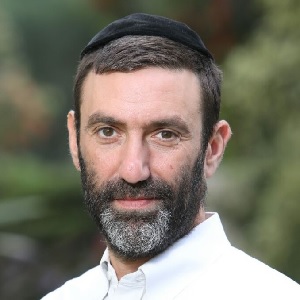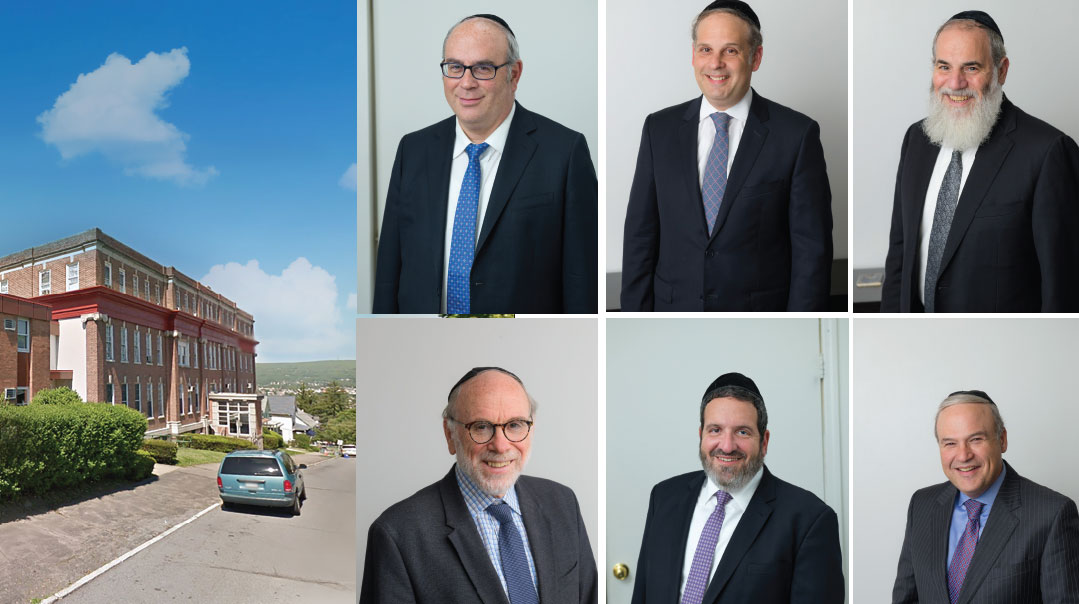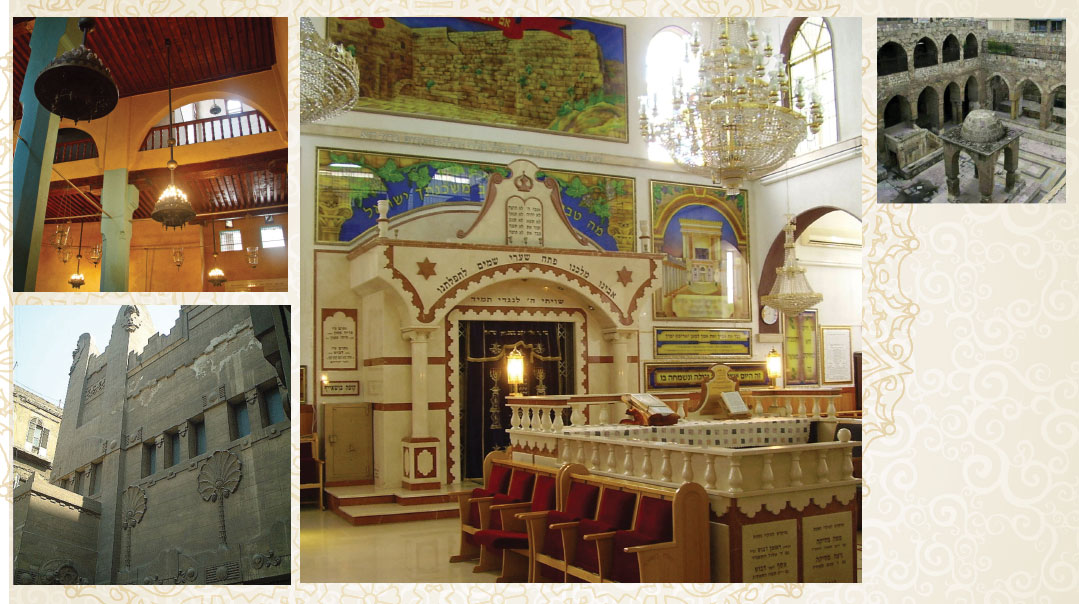The Torah Rises Once More

A historic dedication heralds new hope for Budapest’s Jews

Photos: Zsolt Demesc
One day in the winter of 1944, the Nazis came looking for my mother.
She was one of hundreds of children in an orphanage in Budapest, a safe house set up by the International Red Cross. Her mother had already been force-marched to Bergen-Belsen and her father had died in forced labor on the Ukrainian front. Now, on a cold winter day, a Nazi officer told my mother and all the other Jewish children to exit the building immediately.
The children were told to raise their hands and march into the Jewish ghetto. They did, until their little legs could no longer carry them. The Nazis then led them into the back of a grocery store, and told the children to lie down on the floor.
This is according to Mrs. Judy Zylberger, a former educator in the New York City public school system, and my mother’s first cousin. At the time, Judy was six years old and my mother was five.
As it happens, Judy’s mother was then living in the ghetto. When she heard that the Germans had gathered children there, she rushed to the store to find her daughter and niece.
“All of a sudden my mother appeared,” Judy told me. “It was curfew, so she could have been shot, but how could she not look for us?”
Judy and my mother had been united in the orphanage just weeks before. On her sixth birthday, October 15, 1944, Nazi officers had come to the family apartment of Judy and her parents and told them to exit the apartment and take what they could carry. They would not be coming back, they said. The birthday cake that her grandmother had made her was still in the oven. She took a favorite doll and walked out the door.
Judy was separated from her parents, who were sent to an overcrowded apartment in the ghetto. All Judy remembers is that one day she was marching down one of Budapest’s main boulevards, hands up, when she saw her father out of the corner of her eye. Come here, he motioned. So she did. He picked her up, and brought her close, making sure to cover her yellow star in the process. He told her to act naturally, like nothing had happened, like they were just two average people walking down a Budapest street on a winter day.
Her father, Andras, had taken her crib mattress to the ghetto apartment, and he went there to retrieve it before delivering Judy to the orphanage, where he thought she might be safer.
“He handed me over to a woman, and that’s when I recognized your mother,” she told me. “We hugged and kissed. We were so happy to find each other.”
They slept in a big room full of Jewish children, sharing the little crib mattress. “We slept hugging each other so we shouldn’t fall off,” she says. “That’s how we slept, hugging each other.”
When Judy saw her mother in the back of the grocery store, she started screaming, begging to leave. Judy’s mother, Margit, sensed that the children were in danger and acted. She approached a Nazi officer and told him that she wanted to take two children out of the group. Judy doesn’t know why or how, but he agreed.
That day, my mother, Judy, and her mother walked back to the overcrowded ghetto apartment, where 25 people were cramped into two rooms. A few weeks later, they would move again, to another apartment, where the two cousins slept in adjacent arm chairs. Three months later, the Russians liberated the city, and that summer my mother’s mother returned from Bergen-Belsen. Judy will never forget their reunion.
“When your mother saw her mother, she flew up into her arms, like a big jump, and she couldn’t let go,” Judy says. “The love the two of them had for each other, it was fantastic. They were so happy.”
Judy and my mother (who has no recollection of these events) were fortunate. They had little to eat, were sick much of the time, and were surely terrified. But they made it. Unlike the children who remained in the grocery store, who were shot that day at the edge of the Danube.
Scars of War
Budapest has a heavy history for the Jewish People. On the one hand, it was a city of great Jewish achievement. In the late 19th century, Jews led a florescence in the capital in arts and commerce, and Jews dominated the professional classes. Many grand shuls were built and the city was dubbed the Paris of the East.
After World War I, the Austro-Hungarian Empire ceased to exist, and in 1920 an anti-Semite, Admiral Miklos Horthy, took power and enacted the first anti-Jewish decrees. In 1938, Horthy aligned Hungary with Germany and, at Adolf Hitler’s urging, enacted further anti-Jewish legislation. But Horthy refused Hitler’s demand to deport Hungary’s Jews to death camps. In March 1944, when the war was all but lost, the Nazis invaded Hungary and deposed Horthy. At the time, there were approximately 725,000 Jews living in Hungary, according to Yad Vashem. By the end of the war, 14 months later, 568,000 Jews had been murdered. In one eight-week period, between May 15 and July 9, 430,000 Hungarian Jews were shipped to Auschwitz and gassed upon arrival.
A Communist government took control after the war and many Jews went into virtual hiding. Though a large number of Jews had converted to Christianity before the war, this was different. Many people knew they were Jewish, but simply refused to acknowledge it. They lived as non-Jews and didn’t tell their children about their heritage. In part, this was because it was easier to get ahead in the Communist system as a non-Jew. And in part, it was because the horror of the war in Hungary had left many Jews painfully scarred.
Jews in Hiding
This was the world into which Slomo Koves (pronounced Shlomo Kovesh) was born in 1979. His parents, both the children of Holocaust survivors, only found out they were Jews as teenagers. Koves grew up in a secular home in Budapest and didn’t have much to do with Jewish life. He remembers his grandmother regularly saying that the Holocaust proved there was no G-d.
He thought differently. When he was 11 years old, the precocious Koves started to ask big questions, and as it happened, a rabbi had arrived a year earlier to help him answer them. Rabbi Boruch Oberlander, the Brooklyn-born son of Holocaust survivors from Hungary, was the first Chabad shaliach in Hungary. Koves began to study with Rabbi Oberlander, and soon enough, Koves had kashered part of his parents’ kitchen. Two years later, at the age of 13, the future rabbi went to Israel to learn in Kfar Chabad. That experience was followed by yeshivah in Pittsburgh, France, and Crown Heights. In 2002, after he married his Israel-born wife, Devorah Leah, he moved back to Hungary.
Jews have been living in Hungary at least since the 11th century and possibly since Roman times, but Chabad is relatively new in the country. Like in other places, Chabad sensed an opportunity in Hungary and got to work. Two years after returning to Hungary, Koves founded the United Hungarian Jewish Community (EMIH in Hungarian) which today operates eight Chabad Houses, two kosher restaurants, a kosher supermarket, an elementary school and high school, a weekly and monthly magazine, a publishing house, a soup kitchen, a string of nursing homes, a private university, and a slaughterhouse for geese.
Rabbi Koves also maintains close relations with Hungary’s nationalist government, led by Prime Minister Viktor Orban. In fact, one Israeli living in Budapest told me, Rabbi Koves has played no small part in the improved relationship between Israel and Hungary over the last few years.
Scorned but Safe
I met Rabbi Koves for the first time last Sunday, on the eastern bank of the Danube River. EMIH had invited Mishpacha, along with other news organizations, to attend a momentous occasion: the opening of two new shuls and the dedication of two new Torah scrolls.
The location of the first part of the celebration was no accident. The Jews of Budapest know well the terrible history of the river, where thousands of Jews were shot by the Nazis and their Hungarian allies, the Arrow Cross, 75 years ago in the waning months of the war.
In 2005, the government opened a memorial to those victims just a few hundred meters from the large and impressive Hungarian Parliament Building. Called “Shoes on the Danube Bank,” the memorial consists of 60 pairs of 1940s-era shoes, cast in iron, attached to the stone embankment. Before shooting their helpless victims, the Nazis and Arrow Cross forced them to remove their shoes.
At the site of that memorial, as traffic whizzed by and tourists stared curiously, a string of distinguished speakers connected Hungarian Jewry’s tragic past to its hopeful present moment.
Yes, hopeful. Though Hungary is often depicted as a dangerous place for the country’s 100,000 Jews, the truth is more complicated. According to Kalman Szalai, the secretary of the Action and Protection Foundation, an EMIH-funded organization that fights and monitors anti-Semitism, there were just 32 anti-Jewish hate crimes in Hungary in 2018: three assaults, ten incidents of property damage, and 19 cases of hate speech. In comparison, there were 1,652 anti-Semitic incidents in Great Britain and 541 in France in 2018. As of September, there were 152 reported anti-Semitic incidents in New York City alone.
Like elsewhere in Europe, anti-Semitic tropes are common in the media and wielded by politicians to attract support. In Hungary, much of the negative press has centered on George Soros, the Hungarian Jewish billionaire and opponent of the government, who has been depicted as a Jewish internationalist intent on controlling Hungarian affairs.
The foundation reports that a full one-third of Hungarians (about 3.2 million) can be identified as either “strongly anti-Semitic” or “moderately anti-Semitic.” In short, while anti-Semitism certainly exists in Hungary, Jews are relatively safe. Indeed, Rabbi Koves, the executive rabbi of EMIH, believes that Jews in Hungary are currently experiencing an unprecedented period of freedom.
“I don’t think there has ever been a time when Hungarian Jews have had such an opportunity to be Jewish,” he says. “There is anti-Semitism, but it’s not a physical issue. You don’t have to be worried for your safety. Hungarian Jews have a huge opportunity, and it’s up to us to strengthen and rebuild Jewish life.”
Standing on the banks of the river, with Hungary’s ancient Buda Castle in the background, Rabbi Koves recalled the words of his grandmother, who would comment upon passing the river that its color appeared to her red like blood and not blue like water. But now, things have changed, he said. “In Budapest, there is not only a past, but a future for the Jewish community.”
Rabbi Eliezer Simcha Weiss, a member of the council of the chief rabbinate of Israel, emphasized that theme, recalling the countless victims who died with “Shema Yisrael” on their lips. Those people may have feared that their memories would be extinguished, but the rebirth of Jewish life in Budapest, and the dedication of two Torah scrolls, proves otherwise. “The parchment is burned but the letters fly skyward to Heaven. They can kill us and beat us and drown us, but the neshamah remains. Now the victims can rest in peace.”
Rabbi Boruch Oberlander, celebrating 30 years as a Chabad shaliach, tearfully recalled how his father described the murder of Jews along the Danube. “I thank the Almighty that I can be here and dedicate two Torahs and pass on the teaching that was on their last breath.”
Fear of Consequences
One of the Torahs will be housed in a new Chabad center, not far from the shoe memorial, in what is described as the biggest communal meeting place for Jews in Hungary. At 2,500 square meters, the Jewish center will include a synagogue and study hall, along with two Jewish restaurants and a Jewish theater.
The second Torah scroll will be housed 22 kilometers to the north, in a quaint tourist town called Szentendre. Known as a haven for artists, Szentendre’s narrow streets and 18th- and 19th-century architecture attract thousands of visitors each year, many of them Israeli.
In fact, there is a large Israeli expatriate community in Hungary — not only in Budapest, where a number have come to invest in real estate and other business ventures, but also students who attend Hungary’s many universities. In Szentendre itself, there are only about 120 Jewish households, and many of them are unaffiliated.
The newly installed rabbi in the community, Menachem Myers, 25, is young and idealistic. He grew up in nearby Bratislava, where his father, Baruch, is chief rabbi. His Hungarian is still basic, but he’s already seen some siyata d’Shmaya in his new position.
He and his wife, who grew up as a secular Jew in Budapest, had planned to open their Chabad center/art gallery/café with a borrowed Torah for the first year or so.
Rabbi Myers had a sponsor for half the cost of the Torah, but needed to raise another $11,000 to complete the project. On Rosh Chodesh Elul, at a Chabad community simchah, Rabbi Myers noticed a few well-heeled Jews. He was hesitant to approach a group of strangers to ask for such a large amount of money, but to assure himself that he had at least tried, he walked over.
He introduced himself and told them there was a special opportunity to raise money for a new sefer Torah. One member of the group replied that Rabbi Myers had come at the right time and invited him to present his proposal to the group over dinner. Rabbi Myers later made his pitch and watched as the group’s leader pulled out a pen and piece of paper and went around the table asking his colleagues how much they would be donating. In about three minutes, Rabbi Myers had enough money for his sefer Torah.
Rabbi Myers believes the greatest barrier to the growth of Yiddishkeit in Hungary is fear. “They have a lot of fear of the consequences of publicly proclaiming their Jewish identity,” he says. “I sympathize with what happened here in the past, and I understand the way it would affect people, [but] I think a lot of the fear and the perceived threats to Judaism are overstated. The average Hungarian either doesn’t care or is actually curious about Judaism.”
A Good Start
The first time I traveled to Hungary, 31 years ago, I was a college student spending a semester abroad. The Communists were still in power and the general atmosphere was constrained. It wasn’t quite a police state, but it wasn’t entirely free either.
It was on that trip that I met relatives who had stayed behind after my mother’s family left in 1956, and finally understood, for the first time, where my mother had come from. Even then, I knew the murderous history of the river. At that time, when so many in the World War II generation were still alive, the question I would ask pedestrians internally as I walked down Budapest’s streets was: Where were you doing during the war?
Those people are mostly gone now, but it’s impossible to escape the tragic history of Jews in Hungary. The Holocaust is ever present, especially in Eastern Europe, because the crime was so enormous. Seventy-five years isn’t that long ago; I was born just 24 years after my mother escaped certain death.
But on this trip, I felt a bit encouraged. Thirty-one years ago, I would have surely covered up my kippah as I walked down the street, but last week I didn’t feel that same fear. There is a new openness in Budapest, and Chabad and other Jewish groups operating in Hungary will do their best to bring lost Jews home.
It’s not every day that two new Torah scrolls are raised over the Danube or that dozens of Jews can dance in the narrow streets of a small town to place a new sefer Torah in an aron kodesh. But such is the reality in Hungary today. As a preliminary step in the redemption, it’s a start.
(Originally featured in Mishpacha, Issue 780)
Oops! We could not locate your form.













